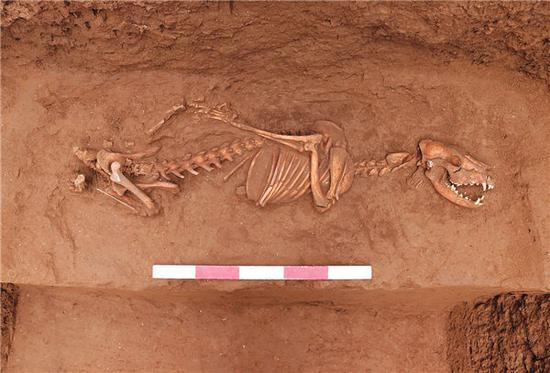
Remains of a buried dog from a newly excavated tomb at the site. The burial of dogs with humans was a custom of the Shang Dynasty (c. 16th century-11th century BC). (Photo provided to China Daily)
DNA technology has decoded information about a newly discovered cemetery and the intriguing relationship between two extended families living nearly 3,000 years ago in what is now Beijing.
The cemetery at the Liulihe Site in the capital's Fangshan district is a large-scale tomb area in the presumed capital of the Yan state of the Western Zhou Dynasty (c.11th century-771 BC) in what is now Beijing, Tianjin and Hebei province.
Yan was once one of the seven leading states of the Warring States Period (475-221 BC) but was conquered by Ying Zheng in 222 BC, the year before he established the Qin Dynasty (221-206 BC) and became China's first emperor, Qinshihuang.
Earlier studies show the city site in the Liulihe Site had the rammed earth remains of palaces and sites related to handicrafts. They also recovered precious bronze artifacts from tombs outside the city.
Since 2022, archaeologists have carried out another survey on the site to see if there are relics supporting the subsistence of the city, like farmland or farmers' residences, says An Nina, a researcher at the Beijing Institute of Archaeology.
They have discovered pits where people dumped garbage, tombs and an ancient ditch beyond the city.
They found 39 tombs in a cemetery covering 800 square meters to the north of the walled city and excavated 33, which belonged to members of two families. Ancient DNA studies further revealed the secrets of the relationship between the buried individuals.
According to An, the earliest tomb was found to be from the early Western Zhou Dynasty. Others are mostly from the middle stage of the dynasty. Considering their positioning, archaeologists believe the ditch was abandoned not later than the middle period of the Western Zhou Dynasty, offering clues for further studies on when the entire site was deserted.
The tombs are believed to belong to non-titled people. "The size of the burial tools and tombs directly reflect the status of the tomb owners. Most of the tombs only have a coffin and are relatively small," An says. "Only nine have inner and outer coffins and are larger. None of them have bronze vessels as funerary objects, often seen in tombs of the aristocracy of that time."
She says this is the first time finding these types of tombs on the site.
According to An, nearly half the tombs have dogs buried with humans, a custom favored by people of the Shang Dynasty (c.16th century-11th century BC) but not so much by Zhou people.
As a result, archaeologists infer that the people were descendants of the Shang people, although they lived in the Yan state.










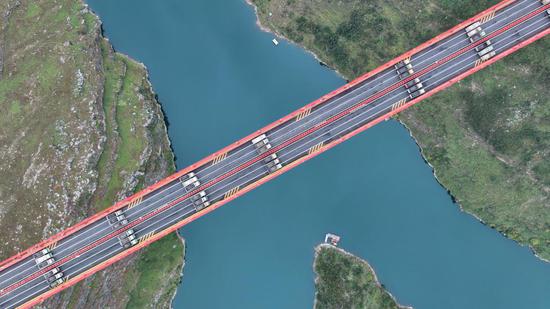







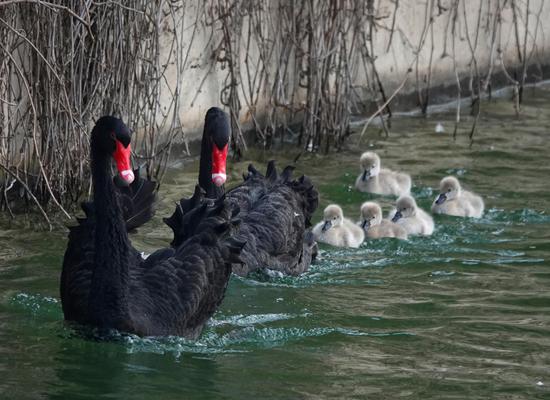
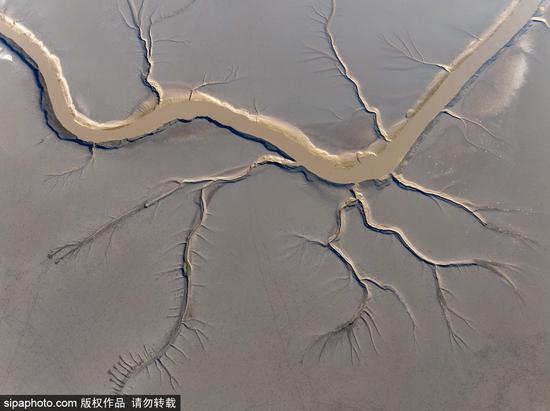


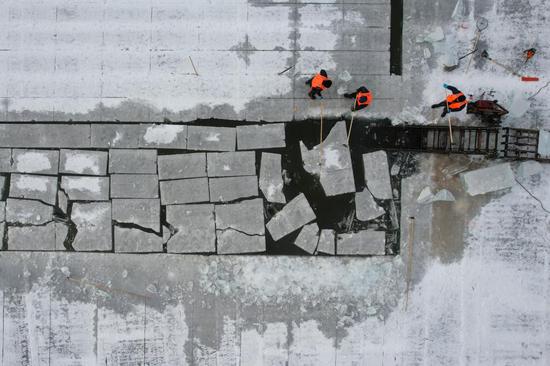




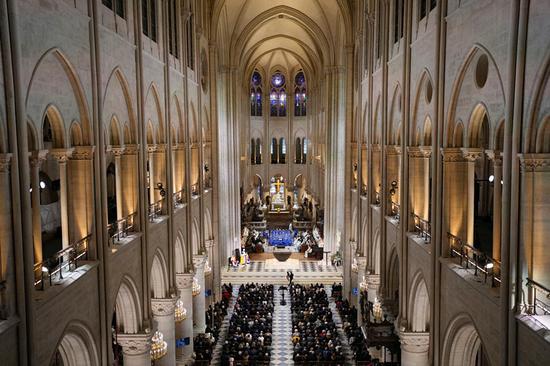






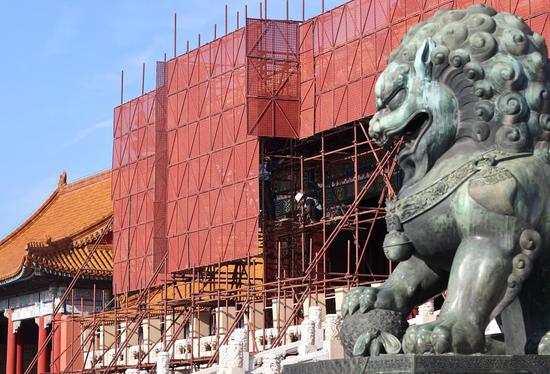
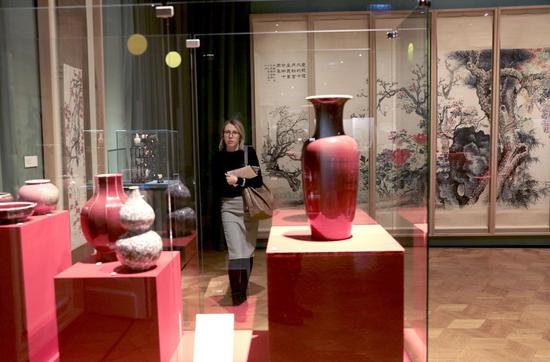
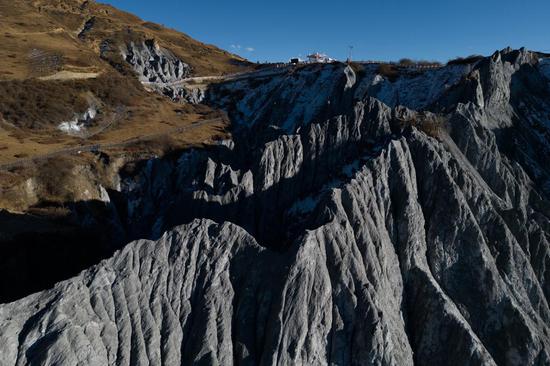


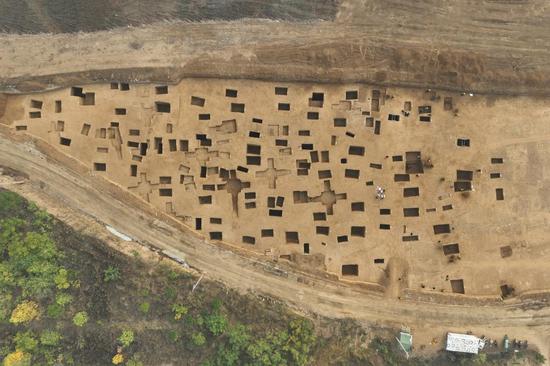
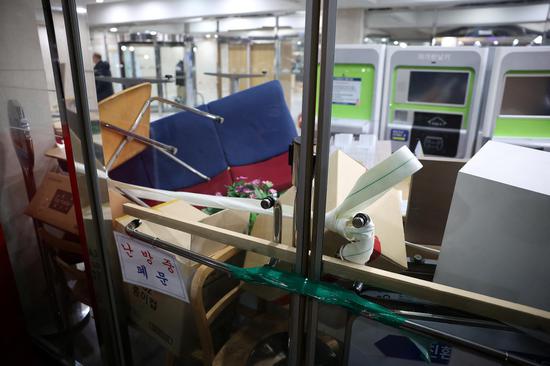







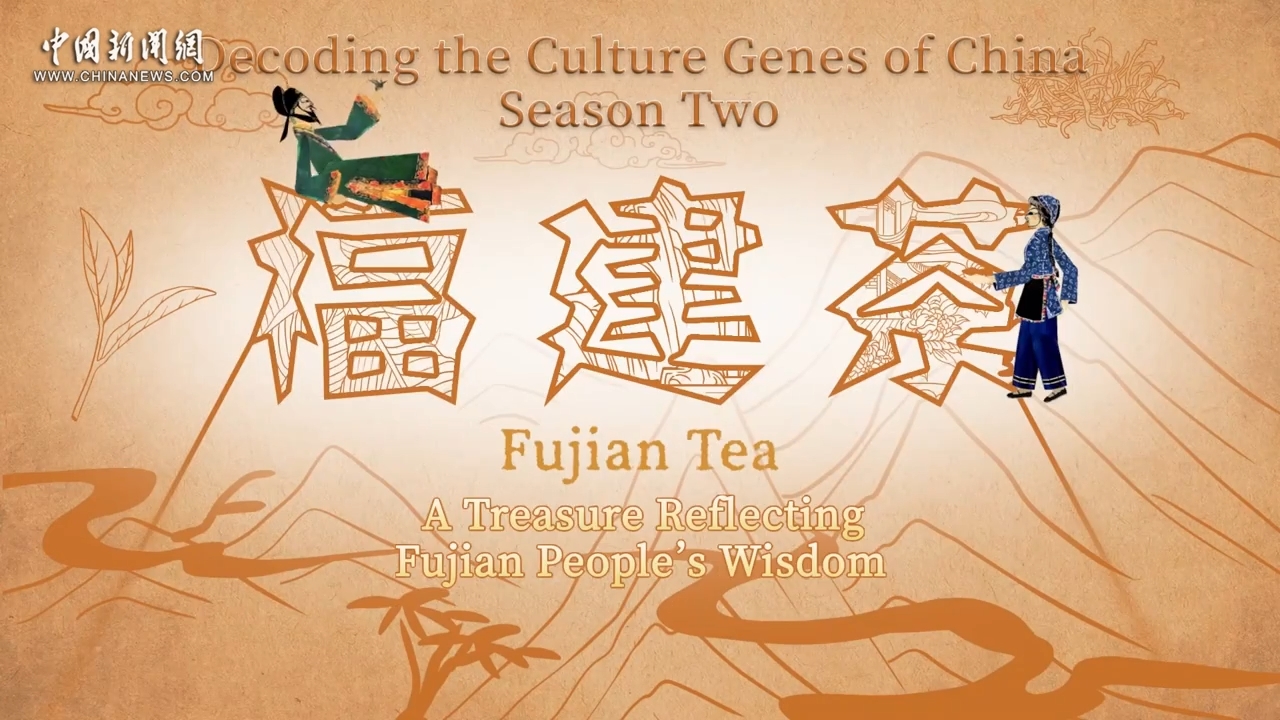

 京公網安備 11010202009201號
京公網安備 11010202009201號